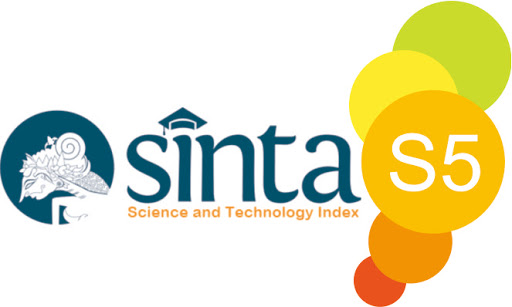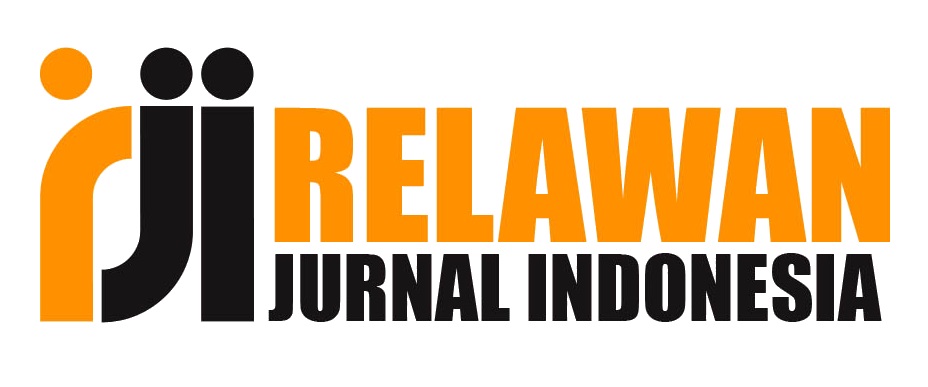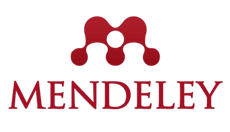Keterampilan Sains Mahasiswa Teknik Mesin pada Materi Logam Fero dan Non-Fero
DOI:
https://doi.org/10.57176/jn.v5i1.154Keywords:
analisis deskriptif , keterampilan sains, logam fero dan non-fero, mahasiswa teknik mesin, pembelajaran material teknikAbstract
Mahasiswa yang mempelajari bidang teknik memerlukan kemampuan analitis, matematika, kreativitas, pemecahan masalah, komunikasi, dan kerja sama tim yang kuat sehingga membutuhkan keterampilan sains yang memadai. Penelitian ini bertujuan untuk menganalisis keterampilan sains mahasiswa Teknik Mesin dalam mempelajari topik bahan teknik logam fero dan non-fero, yang mencakup kemampuan mengajukan pertanyaan, melakukan observasi, berkomunikasi, menginterpretasikan data, dan menerapkan konsep. Penelitian ini menggunakan pendekatan kuantitatif dengan metode deskriptif, melibatkan 18 mahasiswa Teknik Mesin Universitas Hasyim Asy’ari sebagai subjek penelitian. Data dikumpulkan melalui angket berbasis skala Likert 1-5, yang telah divalidasi oleh ahli. Hasil penelitian menunjukkan bahwa keterampilan sains mahasiswa secara keseluruhan berada pada kategori sedang, dengan mayoritas skor terkonsentrasi pada tingkat 2 dan 3 di semua aspek yang diukur. Tidak ada satupun mahasiswa yang memberikan nilai sempurna (skor 5) pada indikator mana pun, yang menunjukkan adanya celah antara pemahaman teoritis dan penerapan praktis. Aspek observasi dan interpretasi data memperoleh skor relatif lebih rendah, mengindikasikan perlunya pengembangan lebih lanjut dalam kemampuan analisis dan komunikasi hasil. Temuan ini merekomendasikan adanya inovasi dalam proses pembelajaran, seperti penerapan pembelajaran berbasis proyek (project-based learning) dan pendekatan kolaboratif yang lebih intensif. Strategi tersebut diharapkan mampu menciptakan pengalaman belajar yang kontekstual, sehingga dapat meningkatkan keterampilan sains mahasiswa teknik secara lebih komprehensif dan efektif, sekaligus mempersiapkan mereka menghadapi tuntutan dunia kerja.
_______________________________________________________________________________________
Students studying engineering require strong analytical, mathematical, creative, problem-solving, communication, and teamwork skills, thus requiring adequate science skills. This study aims to analyze the science skills of Mechanical Engineering students in studying the topic of ferrous and non-ferrous metal engineering materials, which include the ability to ask questions, make observation, communicate, interpret data, and apply concepts. This study employed a quantitative approach with a descriptive method, involving 18 Mechanical Engineering students of Hasyim Asy'ari University as research subjects. Data were collected through a questionnaire a using a 5-point Likert scale , which has been validated by experts. The results showed that students' overall science skills were in the moderate category, with the majority of scores concentrated at levels 2 and 3 across all measured aspects. No students achieved the maximum score (5) on any indicator, indicating a gap between theoretical understanding and practical application. The aspects of observation and data interpretation scored relatively lower, indicating a need for further development in analytical and communication skills. These findings suggest innovations in the learning process, such as the implementation of project-based learning and a more intensive collaborative approach. These strategies are expected to create contextual learning experiences, thereby enhancing engineering students' science skills more comprehensively and effectively, while simultaneously preparing them for the demands of the workplace.
References
Aminah, N., & Priyanto, M. (2022). Peningkatan keterampilan observasi siswa dalam pembelajaran sains dengan metode inquiry. Jurnal Pendidikan Sains Indonesia, 6(3), 112-120
Arifin, Z., & Sukardi, M. (2022). Peran mendengarkan aktif dalam meningkatkan kualitas komunikasi interpersonal. Jurnal Ilmu Komunikasi, 8(4), 245-254.
Arikunto, S. (2019). Prosedur Penelitian: Suatu Pendekatan Praktik. Jakarta: Rineka Cipta.
Bell, S. (2010). Project-Based Learning for the 21st Century: Skills for the Future. The Clearing House: A Journal of Educational Strategies, Issues and Ideas, 83(2), 39–43.
Buck Institute for Education (BIE). (2015). Gold Standard PBL: Essential Project Design Elements. Napa, CA: BIE.
Bunyamin, A., K, A., Abd. Aziz, & Ambiyar. (2019). Penerapan Metode Belajar Diskusi Berbantuan Google Classroom untuk Meningkatkan Hasil Belajar Gambar Teknik Mesin Siswa Kelas X Teknik Pengelasan SMK NEGERI 1 KECAMATAN GUGUAK. Ranah Research : Journal of Multidisciplinary Research and Development, 2(1), 213-218.
Bybee, R. W. (2014). The BSCS 5E Instructional Model: Personal Reflections and Contemporary Implications. Science and Children, 51(8), 10–13
Dewey, J. (1938). Experience and Education. New York: Macmillan.
Hamouda, A.M.S., & Tarlochan, F. (2015). Engaging Engineering Students in Active Learning and Critical Thinking through Class Debates. Procedia: Social and Behavioral Sciences, 191, 990-995.
Kalpakjian, S., Schmid, S. R., & Sekar, V. (2013). Manufacturing Engineering and Technology (7th ed.). Singapore: Pearson Publication.
Kemenristek Dikti. (2019). Laporan Kinerja Pendidikan Tinggi Indonesia Tahun 2019. Jakarta: Kemenristek Dikti.
OECD. (2018). The Future of Education and Skills: Education 2030. Paris: OECD Publishing.
Samlawi, Achmad Kusairi,, Rudi Siswanto, 2016. Diktat bahan kuliah material Teknik: Program studi Teknik Mesin Universitas Lambung Mangkurat
Santoso, M. (2019). Strategi belajar aktif untuk meningkatkan keterampilan berpikir kritis siswa. Jurnal Pendidikan dan Pembelajaran, 5(2), 119-130
Sugiyono. (2018). Metode Penelitian Kuantitatif, Kualitatif, dan R&D. Bandung: Alfabeta
Trilling, B., & Fadel, C. (2009). 21st Century Skills: Learning for Life in Our Times. Jossey-Bass.
Zubaidah, S., Fuad, N. M., Mahanal, S., & Suarsini, E. (2017). Improving Creative Thinking Skills of Students Through Differentiated Science Inquiry Integrated With Mind Map. Journal of Turkish Science Education, 14(4), 77–91.
Downloads
Published
How to Cite
Issue
Section
License
Copyright (c) 2025 Dian Anisa Rokhmah Wati, Retno Eka Pramitasari, Lia Ardiansari

This work is licensed under a Creative Commons Attribution-ShareAlike 4.0 International License.
You are free to:
- Share — copy and redistribute the material in any medium or format for any purpose, even commercially.
- Adapt — remix, transform, and build upon the material for any purpose, even commercially.
- The licensor cannot revoke these freedoms as long as you follow the license terms.
Under the following terms:
- Attribution — You must give appropriate credit , provide a link to the license, and indicate if changes were made . You may do so in any reasonable manner, but not in any way that suggests the licensor endorses you or your use.
- ShareAlike — If you remix, transform, or build upon the material, you must distribute your contributions under the same license as the original.
- No additional restrictions — You may not apply legal terms or technological measures that legally restrict others from doing anything the license permits.
Notices:
You do not have to comply with the license for elements of the material in the public domain or where your use is permitted by an applicable exception or limitation .
No warranties are given. The license may not give you all of the permissions necessary for your intended use. For example, other rights such as publicity, privacy, or moral rights may limit how you use the material.
















